Prognosis
Congenital phimosis and paraphimosis
Congenital (physiologic) phimosis resolves spontaneously in almost all patients. Without treatment, only 1% of boys 16 to 17 years of age continue to have physiologic phimosis.[7] Rarely, adhesions or scarring can recur following circumcision or preputioplasty, and cause inability to fully retract the foreskin from the glans.
In case-control studies, acquired (pathologic) phimosis and balanitis xerotica obliterans have been shown to be a risk factor for the development of squamous cell carcinoma of the penis.[71]
Prompt recognition and treatment of paraphimosis typically results in resolution without lasting consequences.[25] Recurrence remains a possibility as long as the patient is uncircumcised.
Hypospadias
Surgical success rates with hypospadias depend upon the severity of the condition and the presence of any underlying medical conditions (e.g., differences of sexual differentiation). In patients with distal hypospadias, success rates with a single surgery are generally >90%, with <10% healing with urethral fistula, stricture, or wound dehiscence. Complications for proximal hypospadias vary widely between 10% and 50%, and referral to a surgeon specializing in proximal hypospadias should be considered.[72]
Concealed or buried penis
Concealed penis may resolve as fat distribution changes, and observation is warranted in boys younger than 3 years of age (before toilet training). The need for toilet training and psychological aspects of the condition may warrant earlier surgical correction.[1] If buried penis persists past 3 years of age, surgical options should be explored with referral to a urologist.[Figure caption and citation for the preceding image starts]: Congenital buried penisFrom the collection of Nicol Corbin Bush, MD [Citation ends].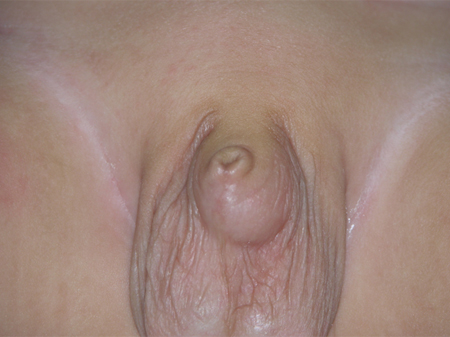 [Figure caption and citation for the preceding image starts]: Congenital buried penis: abundant inner preputial skin with paucity of shaft skinFrom the collection of Nicol Corbin Bush, MD [Citation ends].
[Figure caption and citation for the preceding image starts]: Congenital buried penis: abundant inner preputial skin with paucity of shaft skinFrom the collection of Nicol Corbin Bush, MD [Citation ends].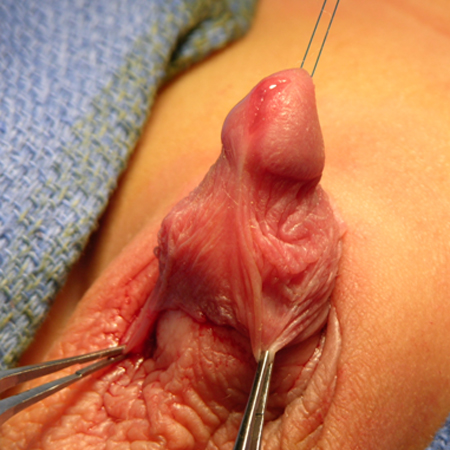 [Figure caption and citation for the preceding image starts]: Congenital buried penisFrom the collection of Warren T. Snodgrass, MD [Citation ends].
[Figure caption and citation for the preceding image starts]: Congenital buried penisFrom the collection of Warren T. Snodgrass, MD [Citation ends]. [Figure caption and citation for the preceding image starts]: Repaired congenital buried penis (with bilateral hernia repair and scrotoplasty)From the collection of Warren T. Snodgrass, MD [Citation ends].
[Figure caption and citation for the preceding image starts]: Repaired congenital buried penis (with bilateral hernia repair and scrotoplasty)From the collection of Warren T. Snodgrass, MD [Citation ends].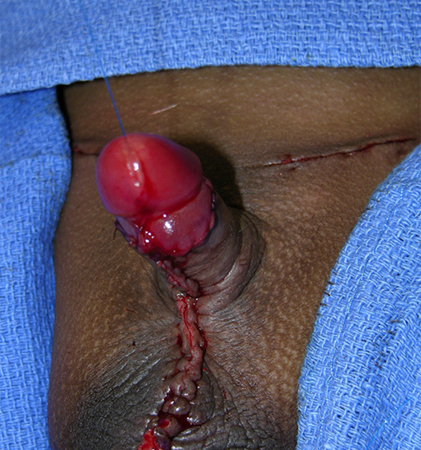 [Figure caption and citation for the preceding image starts]: Congenital buried penisFrom the collection of Nicol Corbin Bush, MD [Citation ends].
[Figure caption and citation for the preceding image starts]: Congenital buried penisFrom the collection of Nicol Corbin Bush, MD [Citation ends].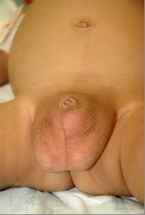 [Figure caption and citation for the preceding image starts]: Repaired congenital buried penisFrom the collection of Nicol Corbin Bush, MD [Citation ends].
[Figure caption and citation for the preceding image starts]: Repaired congenital buried penisFrom the collection of Nicol Corbin Bush, MD [Citation ends].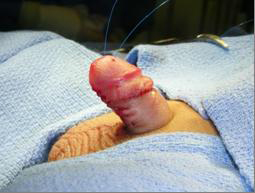
Use of this content is subject to our disclaimer